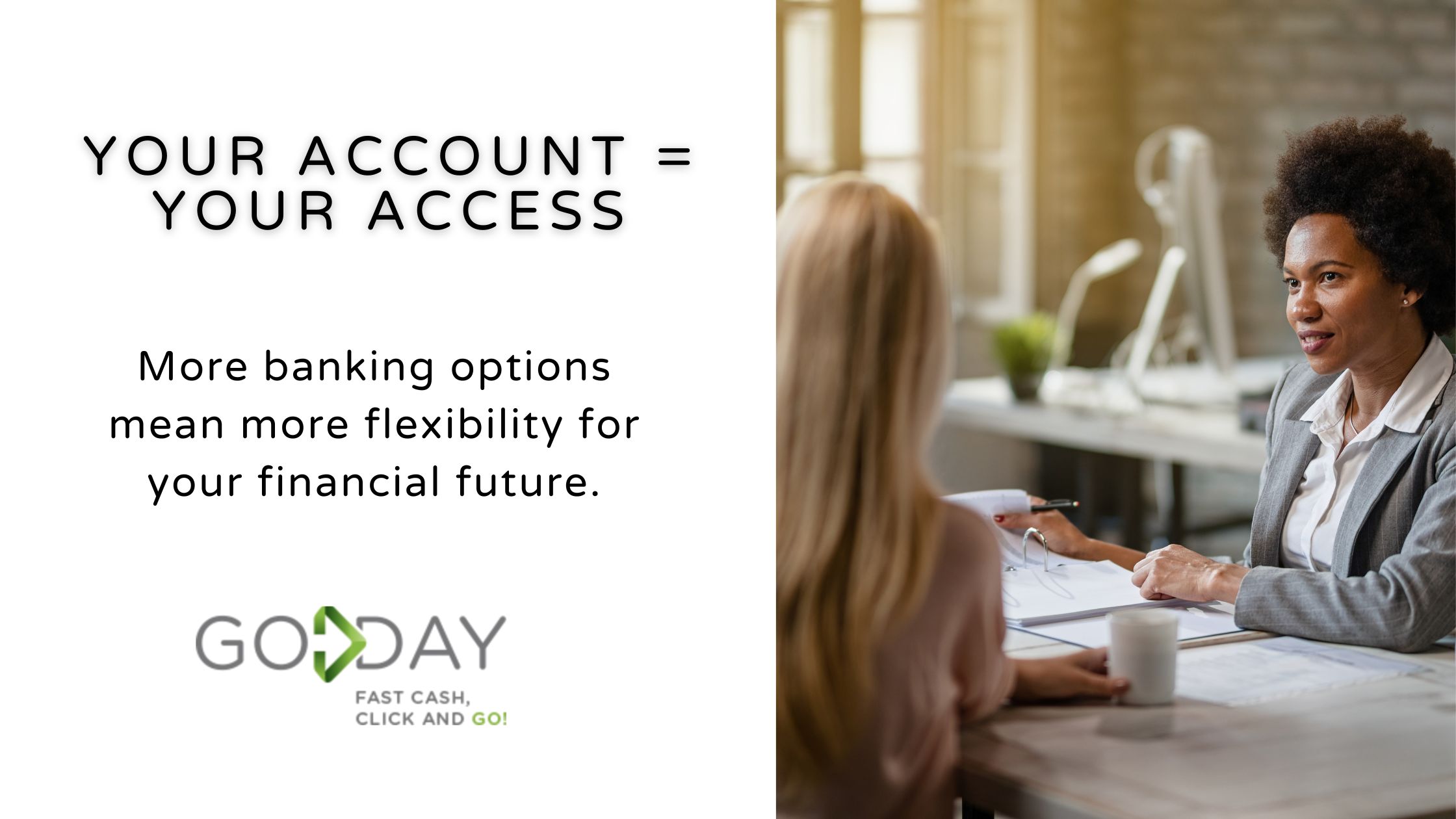
Rejection can sting, especially when it comes from your bank. You’ve filled out the forms, provided the paperwork, and waited for that call or email… only to hear “no.” For many Canadians, that moment brings a wave of uncertainty. How will you cover that unexpected bill? How will you pay for the car repair you cannot delay?
The truth is, a bank’s “no” is not the end of the road. In fact, it is often the starting point for discovering other ways to secure the funds you need without sacrificing your financial health. Whether you have less-than-perfect credit, no bank account, or you simply do not meet traditional lending requirements, there are responsible paths forward.
Let’s explore why banks might reject you, the alternative lending options you can consider, and how to move forward with confidence.
Why Banks Say No And Why It’s Not the Final Word
Banks are not in the business of saying yes to everyone. Their approval process is strict and often prioritizes low-risk borrowers with steady income, established credit histories, and specific debt-to-income ratios. Some common reasons for rejection include:
- Low credit score: Even a short history of late payments can raise red flags.
- High debt load: If you are already juggling multiple debts, banks may see you as a higher risk.
- Unstable income: Freelancers, gig workers, or those between jobs may find it harder to qualify.
- No collateral: Secured loans require assets, and without them, approval can be difficult.
These criteria can feel like barriers, but they are really just one lens through which to view your financial story. Other lenders use different lenses, and that can make all the difference. Being denied by a bank simply means you have not found the right fit yet, not that you are unworthy of credit.
Alternative Loan Sources Worth Considering
When your bank says no, you are not out of options. You simply need to explore other doors, many of which are built with flexibility in mind.
Credit unions, for example, may have more community-focused lending policies. Peer-to-peer lending platforms connect borrowers directly with investors, bypassing traditional financial institutions. And reputable online lenders like GoDay offer short-term and installment loan options with fast approvals, often within the same day.
These personal loan alternatives can be particularly helpful in emergencies or when your needs are time-sensitive. The key is to look for transparency in fees, repayment terms that fit your budget, and a lender with a proven track record.
While banks are often bound by tighter regulations, alternative lenders may have the flexibility to consider your overall financial picture, including your earning potential, not just your credit score. That broader perspective can open doors you did not realize were available.
Loan Options for Bad Credit or No Credit
A low or non-existent credit score does not have to be a dealbreaker. In fact, some lenders specialize in helping borrowers in exactly this situation.
- Installment loans can give you the time and structure you need to repay without overwhelming your budget.
- Secured loans use an asset such as a vehicle to reduce lender risk and open the door to better rates.
- Guarantor loans allow you to borrow with the help of someone who has stronger credit.
Responsible borrowing here means understanding the terms, knowing your repayment plan, and seeing the loan as part of a bigger plan to improve your credit score over time. With each on-time payment, you are building a track record that can help you qualify for better terms in the future.
Think of it not just as a loan, but as a stepping stone toward greater financial independence.
Loan Types Available Without a Bank Account
No bank account? While it does limit traditional lending routes, it does not make borrowing impossible.
Some lenders can deposit funds to prepaid debit cards or offer cash pick-up services through partnered retailers. Certain payday or installment lenders work with alternative disbursement methods, ensuring that a lack of a bank account does not block access to urgent funds.
Still, it is worth considering the steps to obtaining a loan or bank account in parallel. Setting up even a basic chequing account can open more borrowing and repayment options in the future, and help with money management. Having a bank account also makes it easier to set up automatic payments, which can reduce the risk of missed deadlines and strengthen your financial reputation.
Instant and Emergency Loan Solutions
When the fridge breaks, the car will not start, or a medical bill lands in your lap, waiting weeks for approval is not an option. That is where same day loans come into play.
Reputable online lenders can process your application, verify your details, and transfer funds within hours. This speed can be life-saving in emergencies, but it is crucial to borrow only what you need and have a clear plan for repayment. Doing so will help you avoid missed payments that can hurt your credit and increase costs.
In these situations, the best approach is to pair speed with strategy, acting quickly to get the funds, but thinking long-term about how you will pay them back. See FCAC’s payday‑loan guidance to understand licensing and cost limits by province.
Pros and Cons of Non-Bank Loans
Non-bank loans offer speed, flexibility, and accessibility, especially for borrowers who do not fit the traditional mold. But they are not without trade-offs.
Pros:
- Faster approval times
- More flexible eligibility requirements
- Multiple disbursement options
- Opportunity to rebuild credit with on-time payments
Cons:
- Potentially higher interest rates
- Shorter repayment periods for some products
- Need for extra diligence in finding reputable lenders
By weighing the pros and cons and researching each option, you can choose a borrowing path that supports your immediate needs without jeopardizing your long-term financial health. Remember, the goal is not just to get approved. It is to get approved for a loan that works for you now and later.
Eligibility and Challenges Without a Bank Account
Lenders, even alternative ones, need to assess risk. Without a bank account, they cannot easily track your income or set up automated repayments. This makes them cautious, but not closed off.
You may need to provide:
- Proof of income through pay stubs or invoices
- Government-issued ID
- A stable contact method, such as phone and email
Overcoming these challenges often comes down to organization, keeping your documentation ready, being upfront about your situation, and showing a clear ability to repay. The stronger your case, the more likely a lender will be to extend credit, even without traditional banking access.

Steps to Obtaining a Loan or Bank Account
If you are repeatedly hitting roadblocks, it may be time to pair your borrowing goals with banking access. Opening a basic account can make future borrowing smoother and often cheaper.
Here is how to start:
- Compare banks and credit unions offering no-fee or low-fee accounts.
- Gather required documents, usually ID, proof of address, and income details.
- Consider starting with a prepaid card that can later be upgraded to a chequing account.
Once your account is in place, you will have more lenders to choose from, and more repayment options to align with your debt repayment strategies. It is a small step that can have a big impact on your financial flexibility.
Borrowing Responsibly in the Digital Age
It has never been easier to borrow money online, but that also means it has never been more important to research your lender. Look for:
- Clear, upfront fee disclosures
- Flexible repayment terms
- Positive customer reviews and ratings
- Proper licensing in your province
GoDay, for example, operates with transparency, speed, and a focus on helping Canadians access short-term solutions responsibly. That means no hidden fees, straightforward terms, and funding that can be in your account the same day you are approved. Responsible borrowing is not just about getting the money. It is about ensuring the loan strengthens, not strains, your financial position.
Finding the Right Path Forward
A bank’s “no” is not the end of your borrowing story. By exploring alternative lenders, understanding your eligibility, and making informed choices, you can access the funds you need without compromising your financial stability.
Whether you are dealing with an emergency, working to rebuild your credit, or navigating life without a bank account, options exist, and some can put cash in your hands the very same day. The key is to slow down, research carefully, and borrow only what you can confidently repay.
Your financial journey is yours to shape. Sometimes, the best path forward begins where you least expect it, not in the bank’s approval office, but in the space where you take control, make informed choices, and create a financial plan that works for you today and tomorrow.


